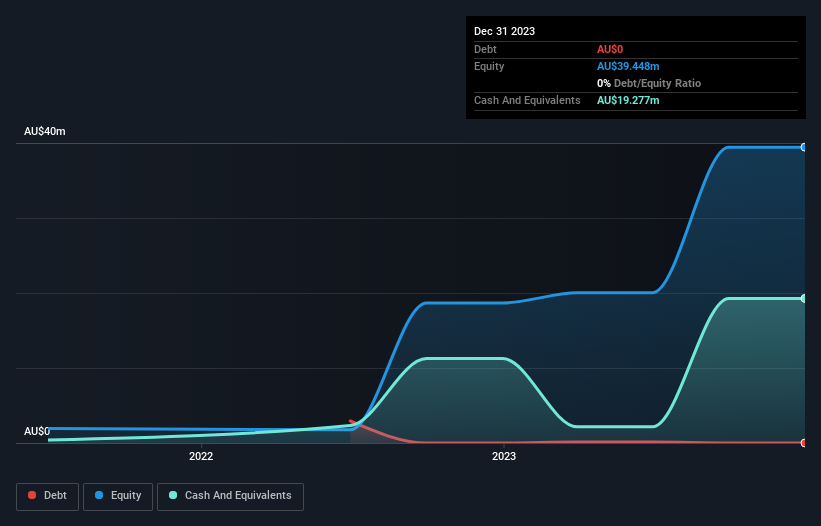- Australia
- /
- Oil and Gas
- /
- ASX:OMA
We Think Omega Oil & Gas (ASX:OMA) Needs To Drive Business Growth Carefully

We can readily understand why investors are attracted to unprofitable companies. For example, although Amazon.com made losses for many years after listing, if you had bought and held the shares since 1999, you would have made a fortune. But the harsh reality is that very many loss making companies burn through all their cash and go bankrupt.
Given this risk, we thought we'd take a look at whether Omega Oil & Gas (ASX:OMA) shareholders should be worried about its cash burn. In this article, we define cash burn as its annual (negative) free cash flow, which is the amount of money a company spends each year to fund its growth. We'll start by comparing its cash burn with its cash reserves in order to calculate its cash runway.
See our latest analysis for Omega Oil & Gas
When Might Omega Oil & Gas Run Out Of Money?
A company's cash runway is the amount of time it would take to burn through its cash reserves at its current cash burn rate. When Omega Oil & Gas last reported its December 2023 balance sheet in March 2024, it had zero debt and cash worth AU$19m. Looking at the last year, the company burnt through AU$18m. So it had a cash runway of approximately 13 months from December 2023. While that cash runway isn't too concerning, sensible holders would be peering into the distance, and considering what happens if the company runs out of cash. We should note, however, that if we extrapolate recent trends in its cash burn, then its cash runway would get a lot longer. You can see how its cash balance has changed over time in the image below.

How Is Omega Oil & Gas' Cash Burn Changing Over Time?
In our view, Omega Oil & Gas doesn't yet produce significant amounts of operating revenue, since it reported just AU$32k in the last twelve months. Therefore, for the purposes of this analysis we'll focus on how the cash burn is tracking. In fact, it ramped its spending strongly over the last year, increasing cash burn by 138%. That sort of spending growth rate can't continue for very long before it causes balance sheet weakness, generally speaking. Omega Oil & Gas makes us a little nervous due to its lack of substantial operating revenue. We prefer most of the stocks on this list of stocks that analysts expect to grow.
How Hard Would It Be For Omega Oil & Gas To Raise More Cash For Growth?
While Omega Oil & Gas does have a solid cash runway, its cash burn trajectory may have some shareholders thinking ahead to when the company may need to raise more cash. Companies can raise capital through either debt or equity. Commonly, a business will sell new shares in itself to raise cash and drive growth. By comparing a company's annual cash burn to its total market capitalisation, we can estimate roughly how many shares it would have to issue in order to run the company for another year (at the same burn rate).
Since it has a market capitalisation of AU$61m, Omega Oil & Gas' AU$18m in cash burn equates to about 30% of its market value. That's fairly notable cash burn, so if the company had to sell shares to cover the cost of another year's operations, shareholders would suffer some costly dilution.
Is Omega Oil & Gas' Cash Burn A Worry?
On this analysis of Omega Oil & Gas' cash burn, we think its cash runway was reassuring, while its increasing cash burn has us a bit worried. Looking at the factors mentioned in this short report, we do think that its cash burn is a bit risky, and it does make us slightly nervous about the stock. On another note, Omega Oil & Gas has 5 warning signs (and 3 which are a bit concerning) we think you should know about.
Of course, you might find a fantastic investment by looking elsewhere. So take a peek at this free list of interesting companies, and this list of stocks growth stocks (according to analyst forecasts)
New: AI Stock Screener & Alerts
Our new AI Stock Screener scans the market every day to uncover opportunities.
• Dividend Powerhouses (3%+ Yield)
• Undervalued Small Caps with Insider Buying
• High growth Tech and AI Companies
Or build your own from over 50 metrics.
Have feedback on this article? Concerned about the content? Get in touch with us directly. Alternatively, email editorial-team (at) simplywallst.com.
This article by Simply Wall St is general in nature. We provide commentary based on historical data and analyst forecasts only using an unbiased methodology and our articles are not intended to be financial advice. It does not constitute a recommendation to buy or sell any stock, and does not take account of your objectives, or your financial situation. We aim to bring you long-term focused analysis driven by fundamental data. Note that our analysis may not factor in the latest price-sensitive company announcements or qualitative material. Simply Wall St has no position in any stocks mentioned.
Have feedback on this article? Concerned about the content? Get in touch with us directly. Alternatively, email editorial-team@simplywallst.com
About ASX:OMA
Omega Oil & Gas
Engages in the evaluation and exploration of oil and gas in Australia.
Flawless balance sheet moderate.


